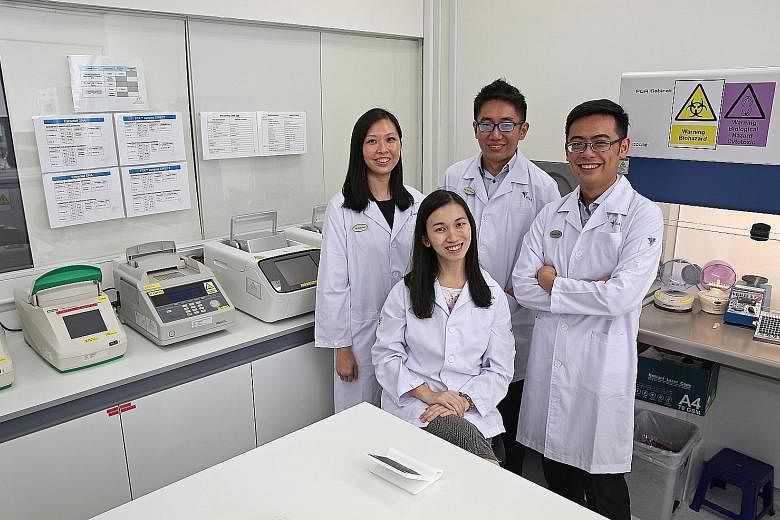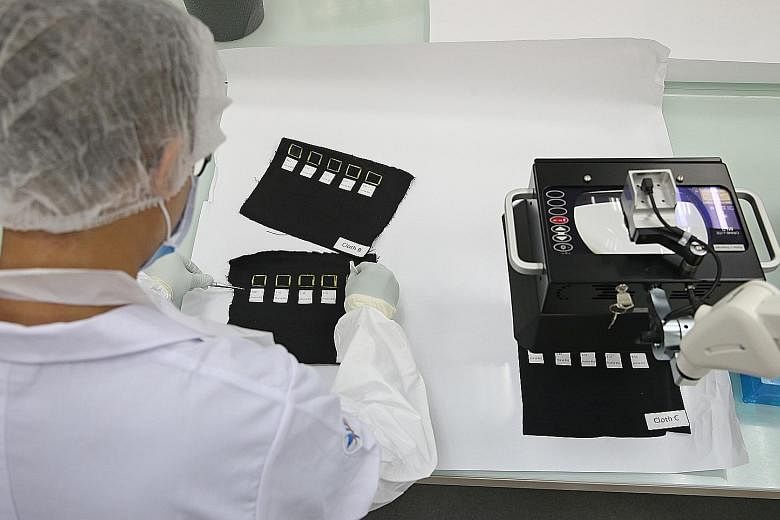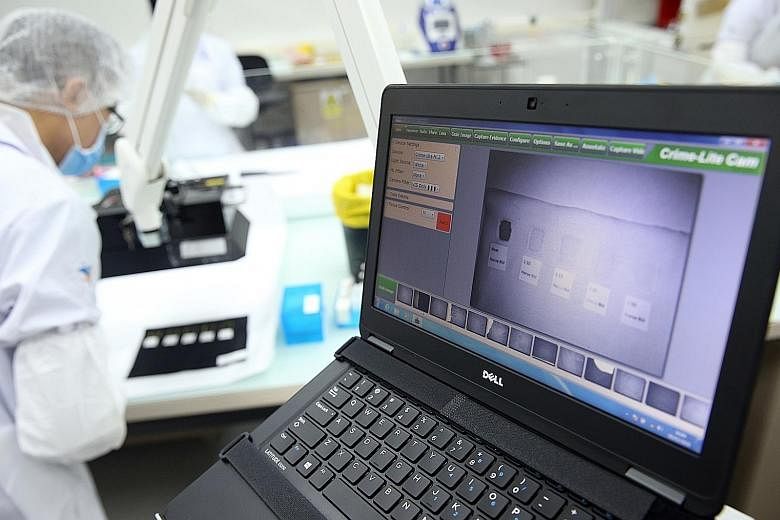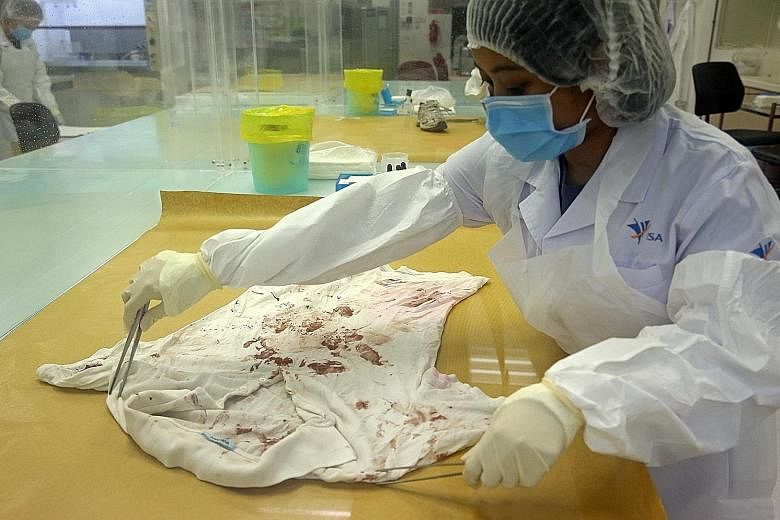The science of tracking down criminals has come a long way in the last decade.
In the past, at least a drop of blood was needed to process DNA; but now, just a brush of a person's fingertips at a crime scene is enough to pin down a suspect.
Singapore's very own CSI (Crime Scene Investigation) department - the Health Sciences Authority's (HSA) DNA Profiling Laboratory - hopes to take this a step further.
It is now looking into technology that could predict what a person looks like, just by taking a close look at his genetic material.
Currently, it can guess a person's ethnicity with about 90 per cent accuracy - although that is still not good enough for real cases.
"There's a lot of research ongoing... For example, it could allow you to predict a person's bone structure or face shape," said Ms Ng Huey Hian, a forensic scientist at the laboratory. "The technology is still premature, but it would be very useful."
The laboratory works on 2,200 cases a year, combing crime scene exhibits for traces of DNA left behind. These could include bloodstains on clothing, semen left on a mattress or even fingerprints inside a glove.
Major crimes - such as the 2013 Choa Chu Kang murder in which a man killed his wife's former lover - can involve hundreds of such exhibits being processed over several days, according to forensic scientist Ryan Ping.
Seven in 10 cases involve DNA left behind from a person's touch. At times, it can be the only evidence linking a suspect to a crime.
In August 2016, two men slashed another man and then fled in a taxi. Witnesses could not identify them, and closed-circuit television footage was unclear.
But the criminals had left traces of DNA in the taxi and that was enough to bring them to justice.
"We can build a DNA profile from as little as 40 cells, which is equivalent to what you find in about 10 fingerprints," said Mr Terenze Ong, another forensic scientist.
Cases that the lab handles range from petty crimes to rapes and murders to missing-person incidents.
Modern technology is so sensitive that staff must wear gowns, gloves, masks and caps to avoid accidentally contaminating samples.
Added Mr Ong: "Our results may be used as evidence in court, so our work is very important."
After DNA is culled from an object, it must be cleaned and "amplified" - replicated thousands of times so that a DNA profile can be constructed.
-
40
The number of cells sufficient to build a DNA profile
-
Impact of new tech
Two recent cases that might not have been solved 10 years ago, when DNA profiling technology was less advanced:
VANDALS AT BISHAN MRT DEPOT
In November 2014, German nationals Andreas Von Knorre and Elton Hinz arrived here and bought 12 cans of spray paint and yellow latex gloves.
On Nov 8, they entered the Bishan MRT depot in the early hours of the morning and sprayed graffiti on a train, leaving spray paint cans and a glove behind. They left Singapore after that, but were arrested on Nov 20 at Kuala Lumpur International Airport, where they were about to board a flight to Australia.
HSA scientists were able to track down the culprits from DNA left inside the glove. This genetic data was used to link the perpetrators to the crime.
SLASHING INCIDENT IN BUKIT TIMAH
In 2016, two men slashed businessman Loo Kean Boon with knives at Club ION in Balmoral Plaza before escaping in a taxi.
Witnesses could not identify the men, and closed-circuit television footage was unclear.
But the police later managed to track down the taxi and collected samples of genetic material from it using swabs.
The team at the DNA Profiling Laboratory found that the samples were a match for one of the men, leading to the arrest of both criminals.
But this is not as easy as it sounds. If a sample has been contaminated, processing it could result in a jumble of genetic material that cannot be tagged to any one person.
Sometimes, there may also not be enough quality DNA left for a precise match.
"Things like sunlight, moisture, heat and bacteria all might affect the degradation of DNA," Ms Ng said.
But working in a forensic laboratory is not how it is often portrayed in television dramas.
Senior forensic scientist Lim Xin Li said roles are much more specialised in real life.
Her team deals only with DNA profiling. Other departments at the HSA focus on forensic chemistry and physics or illicit drugs.
Also, Ms Lim added: "The scientists always seem to be working in the dark on TV - but there's actually a lot of light here."





